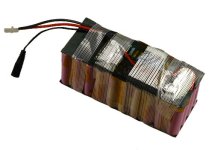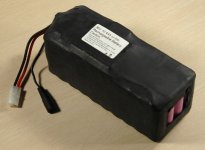Latest cell testing methodology
Before building packs I do thoroughly test and evaluate every cell.
I have developed and refined simple and effective procedures ...
Step 1
I
bulk charge all cells to just above working voltage, then I allow cells to set several days and remove any with bleed down.
Step 2
Then I
"Bulk" capacity test all cells -
Method 2 preferred.
Step 3
Any unfamiliar brand, I choose a good sample and run a
Charge Capacity Test to build a capacity map.
This test is performed by discharging cells to maximum DOD, then charging in 2/100th V increments, recording mAh required for each step. This gives an accurate map of each portion of capacity added at each fraction of a volt.
Previously, I have built capacity maps based on
Discharge - mAh /100th V.
While interesting, the discharge map was flawed due to voltage sag and IR.
Step 4
Finally, I Match up the best cells for pack build. Equal total mAh per bank works nicely.
So far, and preferably, each pack is constructed from cells of same brand and oem rated capacity and results have been excellent.
I've been building eBike battery packs from recycled laptop cells for 6+ years and am continually finding-developing better methods.
The thread
Homemade Battery Packs is a reasonably complete documentation of my progress.



